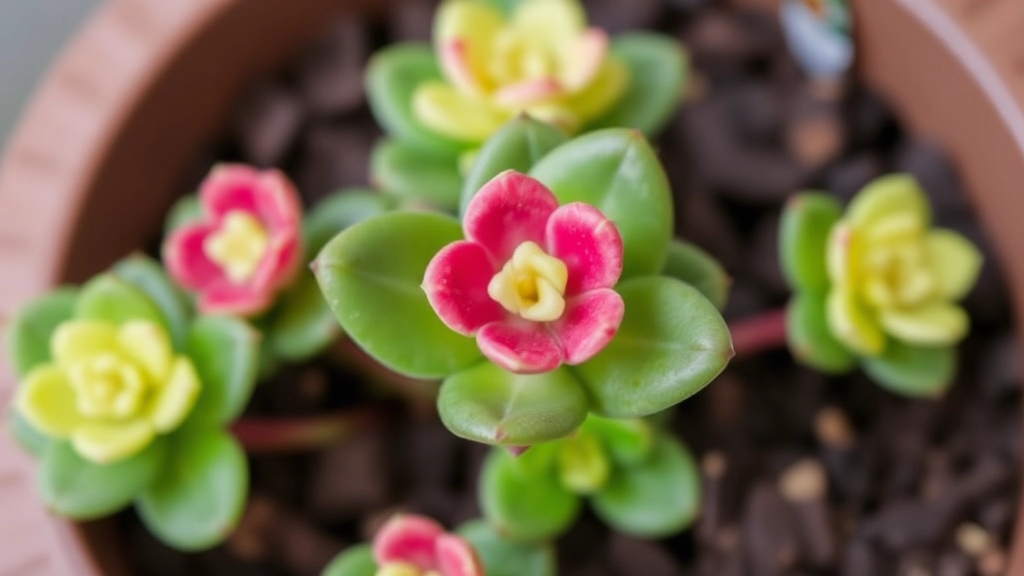Kalanchoe Chocolate Soldier Propagation
When it comes to Kalanchoe Chocolate Soldier propagation, timing is everything. The best time to propagate is during the growing season, typically in spring or early summer. This ensures that the plant is in its active growth phase, making it more likely to root successfully.
Methods of Propagation
There are two main methods for propagating Kalanchoe Chocolate Soldier:
-
Stem Cuttings
Select a healthy stem and cut a section just below a leaf node.
-
Leaf Cuttings
Gently twist off a healthy leaf from the base.
Both methods benefit from using rooting hormone to encourage faster growth. Remember to let the cuttings dry out for a few days before planting to prevent rot.
Choosing the Best Time for Kalanchoe Chocolate Soldier Propagation
When is the right time to propagate your Kalanchoe Chocolate Soldier? This question often weighs on the minds of plant enthusiasts.
Timing is crucial for successful propagation.
Methods of Propagation: Stem vs. Leaf Cuttings
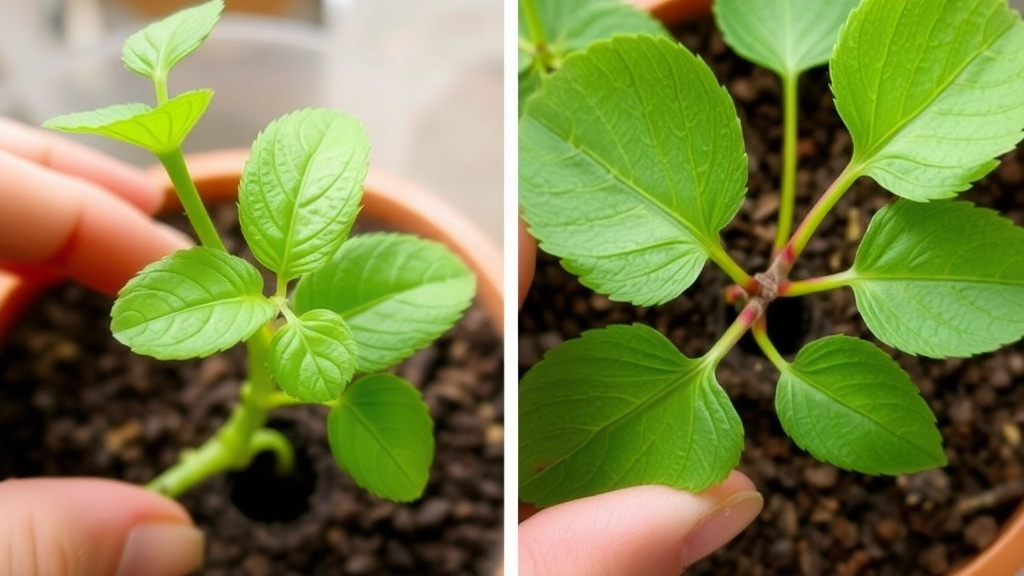
So, you’re ready to propagate your Kalanchoe Chocolate Soldier? Great choice! But you might be wondering: should I go for stem cuttings or leaf cuttings? Let’s break it down.
Stem Cuttings
What Are They?
Stem cuttings are pieces of the main stem that can grow roots and eventually become new plants.
Why Choose Stem Cuttings?
- They usually root faster than leaf cuttings.
- You get a more robust plant from the get-go.
- Ideal for those who want quicker results.
How to Do It:
- Select a healthy stem.
- Cut it just below a leaf node (that’s where the roots will sprout).
- Let it dry for a day or two to form a callous.
Leaf Cuttings
What Are They?
Leaf cuttings involve taking a whole leaf or a part of it to propagate.
Why Choose Leaf Cuttings?
- They’re a bit easier for beginners.
- You can propagate multiple plants from a single leaf.
- Fun to experiment with!
How to Do It:
- Choose a healthy leaf.
- Cut it cleanly at the base.
- Allow it to dry for a day before planting.
Which One Should You Choose?
Time Factor: If you’re looking for quicker results, go for stem cuttings.
Beginners: Leaf cuttings are super forgiving and a great way to start.
Space: If you have limited space, leaf cuttings allow for more plants without needing a lot of materials.
Before diving into the propagation process, selecting the right cuttings is crucial for the success of your Kalanchoe Chocolate Soldier. You might wonder, “How do I know which cuttings are healthy enough to propagate?” Let’s explore the essential steps to ensure you’re choosing the best specimens.
### Identifying Healthy Cuttings:
– **Look for Firmness:** Choose stems that feel firm and robust. Avoid any that are soft or mushy, as these may be signs of rot.
– **Inspect the Leaves:** Healthy cuttings should have vibrant, green leaves without any signs of discoloration or pests. Yellowing or wilting leaves indicate a problem.
– **Check for Length:** Aim for cuttings that are at least 4-6 inches long. This length provides enough material for rooting while ensuring a better chance of survival.
### Preparing Your Cuttings:
– **Use Clean Tools:** Always use sterilised scissors or pruning shears to cut your Kalanchoe. This minimizes the risk of disease.
– **Make a Clean Cut:** Cut just below a leaf node. This is where roots are more likely to develop.
– **Remove Lower Leaves:** Trim any leaves from the bottom half of the cutting. This prevents rot when the cutting is placed in the soil.
For more detailed information on caring for Kalanchoe varieties, you can check out the [complete care guide for Kalanchoe Chocolate Soldier](https://planthq.org/complete-care-guide-for-kalanchoe-chocolate-soldier/) and tips on [how to care for Kalanchoe Tomentosa](https://planthq.org/how-to-care-for-kalanchoe-tomentosa-complete-guide/).
Using Rooting Hormone for Faster Growth
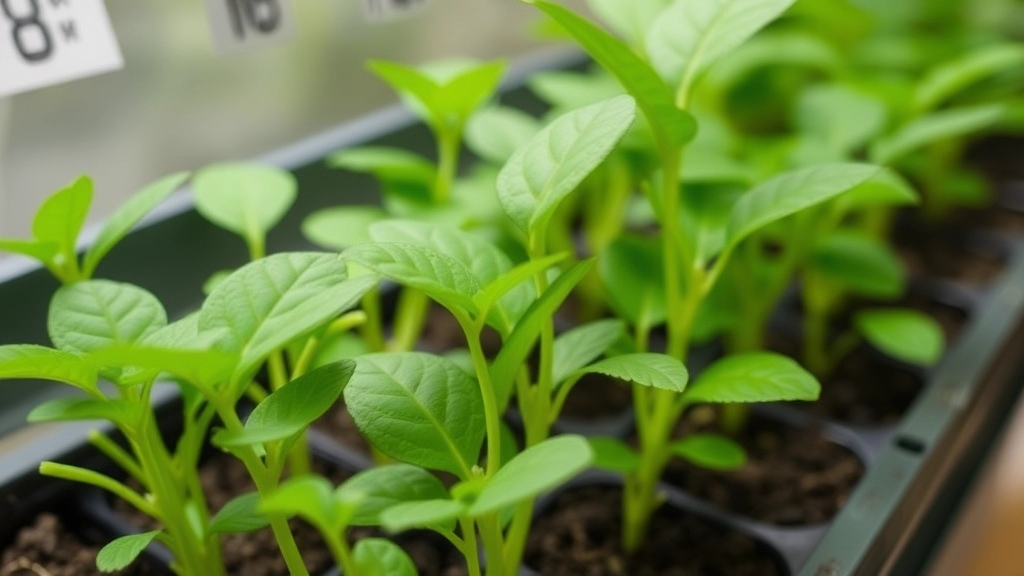
When it comes to propagating Kalanchoe Chocolate Soldier, many of us wonder how to give our cuttings the best chance at thriving. One effective way to enhance root development is by using rooting hormone.
Rooting hormone is a powerful tool that can significantly speed up the process of root formation. Here’s why you should consider it:
- Increases Success Rate: Using rooting hormone can boost the likelihood that your cuttings will take root successfully.
- Encourages Faster Growth: It stimulates the cuttings to produce roots more quickly, helping your plants establish themselves sooner.
- Reduces Stress: It can help the cuttings cope with the stress of being separated from the parent plant.
To apply rooting hormone effectively, follow these simple steps:
- Select the Right Form: Rooting hormones come in powder, gel, and liquid forms. Choose one that suits your preference.
- Dip the Cutting: After preparing your cutting, dip the end into the rooting hormone. Make sure to cover the cut surface thoroughly.
- Shake Off Excess: Gently shake off any excess hormone to prevent root burn.
- Plant Immediately: Once you’ve treated the cutting, plant it in your prepared soil mix right away.
Using rooting hormone is a straightforward way to enhance the propagation process. However, it’s crucial to remember that this is just one part of the equation.
The Importance of Drying the Cuttings Before Planting
Have you ever wondered why some cuttings thrive while others struggle? One crucial step that often gets overlooked is allowing your Kalanchoe Chocolate Soldier cuttings to dry before planting.
Proper Soil and Potting Mix for Root Development
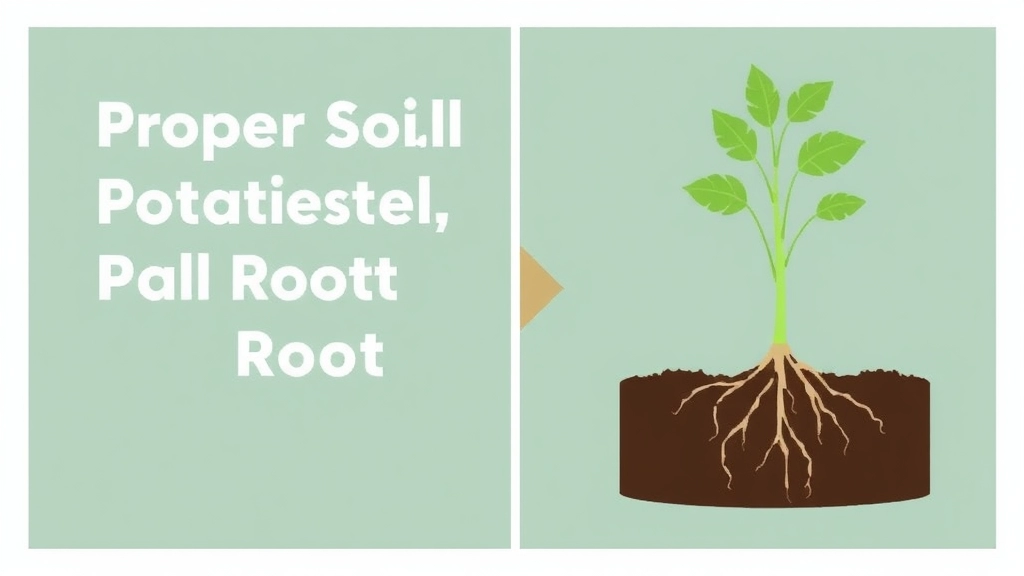
So, you’ve got your Kalanchoe Chocolate Soldier cuttings ready, but what’s next? The right soil and potting mix can make a world of difference in how well your new plants thrive.
Why Soil Matters
You might be wondering why soil is such a big deal. Well, the right mix provides essential nutrients, drainage, and aeration for those delicate roots. Without it, your cuttings might struggle to grow.
What to Look For in a Potting Mix:
- Well-draining: Kalanchoes don’t like to sit in soggy soil. A mix that drains well is crucial.
- Lightweight: A lighter mix helps with aeration and prevents compaction.
- Nutrient-rich: While your cuttings don’t need a ton of nutrients initially, a balanced mix can support their growth.
Recommended Mixes:
- Cactus Mix: A pre-made cactus or succulent mix works wonders. It’s designed for good drainage and aeration.
- DIY Mix: If you’re feeling adventurous, you can create your own! Combine:
- 50% potting soil
- 25% perlite (for drainage)
- 25% sand (for aeration)
Pot Selection Tips:
- Size: Choose pots that are not too big. Small pots help keep moisture levels consistent.
- Drainage holes: Always opt for pots with drainage holes to prevent waterlogging.
Optimal Lighting Conditions for Propagated Cuttings
After ensuring you have prepared your cuttings properly, the next crucial step is to provide the right lighting conditions for your Kalanchoe Chocolate Soldier cuttings to thrive.
Why is Lighting Important?
Proper lighting plays a vital role in the successful propagation of Kalanchoe plants. Insufficient light can lead to weak, leggy growth, while too much direct sunlight can scorch the delicate cuttings.
Watering Techniques to Encourage Rooting
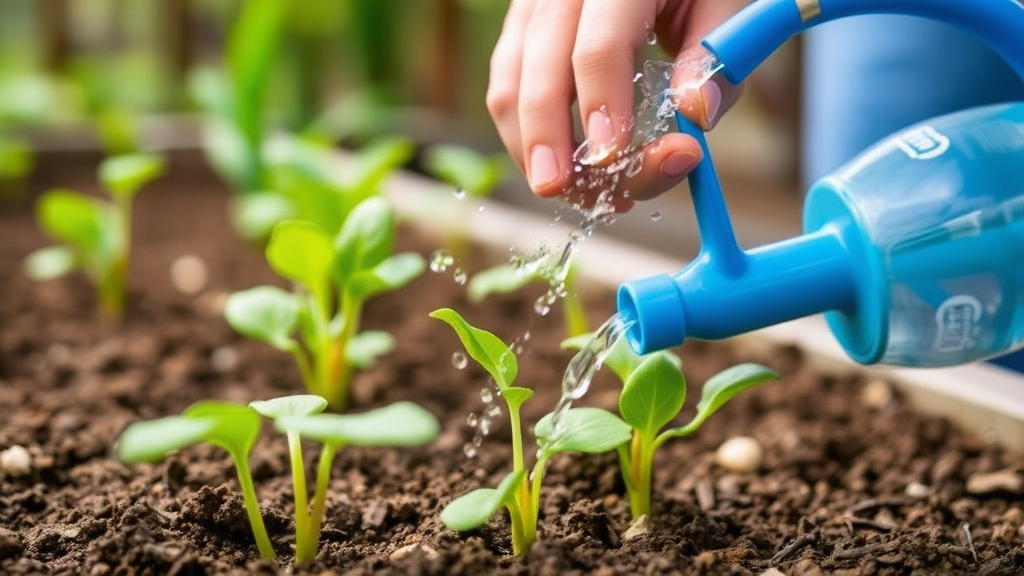
So, you’ve got your Kalanchoe Chocolate Soldier cuttings all prepped and ready to go. Now, let’s talk about watering techniques that will help those little guys root successfully.
How Much Water?
One of the biggest worries when propagating is overwatering. Too much moisture can lead to rot, while too little can dry them out. Here’s how to strike a balance:
- Initial Watering: After planting your cuttings, give them a light watering. You want the soil to be moist but not soggy.
- Check the Soil: Stick your finger about an inch into the soil. If it feels dry, it’s time for a drink. If it’s still moist, hold off.
Watering Frequency
During the rooting phase, you’ll want to keep an eye on the moisture levels. Here’s a simple guide:
- Every Few Days: Water every 3-5 days, depending on your climate.
- Humidity: If you’re in a dry area, you might need to water a bit more often.
Techniques for Success
- Bottom Watering: Place your pots in a tray of water for about 15-20 minutes. This allows the soil to absorb moisture from the bottom up, encouraging healthy root growth.
- Misting: Lightly mist the cuttings with water to maintain humidity, especially if you’re in a dry environment.
Signs of Overwatering
Keep an eye out for these red flags:
- Yellowing leaves
- Mushy stems
If you notice these, cut back on the watering immediately.
Signs of Successful Propagation and Post-Care
After you’ve invested time and effort into propagating your Kalanchoe Chocolate Soldier, it’s essential to recognise the signs of successful propagation. This not only reassures you that your efforts are paying off but also guides you in providing the best post-care for your new plants.
Signs of Successful Propagation
- Root Development
Gently tug on the cutting after a few weeks. If you feel resistance, roots are likely forming.
You may also notice roots emerging from the drainage holes if using a transparent pot. - New Growth
Look for new leaves or shoots developing from the top of the cutting.
Healthy, vibrant green leaves indicate that your cutting is thriving. - Firmness of the Cutting
A healthy cutting will feel firm to the touch. If it appears soft or mushy, it may be rotting. - Color Changes
A change in colour from dull to bright green can signify that your cutting is adapting well.
Post-Care for Your New Kalanchoe
Now that you’ve identified successful propagation, it’s time to focus on post-care to ensure your plants continue to thrive.
- Watering
Keep the soil slightly moist but never soggy. Overwatering can lead to rot. - Fertilising
After a month, consider applying a diluted, balanced fertiliser to encourage growth. - Lighting
Maintain bright, indirect light to promote healthy development without burning the leaves. - Humidity and Temperature
Ensure a warm environment, ideally between 18-24°C, and avoid drafts or sudden temperature changes. - Pest Monitoring
Regularly check for pests like mealybugs or aphids. Early detection is key to preventing infestations.
Recognising these signs and providing appropriate post-care will set the stage for your Kalanchoe Chocolate Soldier to flourish. For more detailed tips, you can refer to our Kalanchoe Panda Plant Care Guide and our guide on addressing drying leaves.
FAQs on Kalanchoe Chocolate Soldier Propagation
What are the methods of propagating Kalanchoe Chocolate Soldier?
You can propagate Kalanchoe Chocolate Soldier using either stem cuttings or leaf cuttings. Each method has its own advantages and steps for successful propagation.
Why should I choose stem cuttings for propagation?
Stem cuttings are ideal if you want quicker results and a more robust plant. They usually root faster than leaf cuttings and are great for those who want quicker outcomes.
How do I propagate using stem cuttings?
To propagate using stem cuttings:
- Select a healthy stem.
- Cut it just below a leaf node.
- Let it dry for a day or two to form a callous.
Why should I choose leaf cuttings for propagation?
Leaf cuttings are easier for beginners and allow you to propagate multiple plants from a single leaf. They are also fun to experiment with.
How do I propagate using leaf cuttings?
To propagate using leaf cuttings:
- Choose a healthy leaf.
- Cut it cleanly at the base.
- Allow it to dry for a day before planting.
Should I use rooting hormone for propagation?
Using rooting hormone can increase the success rate of your cuttings, encourage faster growth, and help the cuttings cope with stress. It’s a useful tool for enhancing root development.
How do I apply rooting hormone?
To apply rooting hormone:
- Select the right form (powder, gel, or liquid).
- Dip the cutting into the rooting hormone, covering the cut surface thoroughly.
- Shake off any excess hormone to prevent root burn.
- Plant the treated cutting in your prepared soil mix immediately.
What type of soil and potting mix should I use?
For optimal root development, use a well-draining, lightweight, and nutrient-rich potting mix. A cactus or succulent mix is recommended. Alternatively, you can create a DIY mix with 50% potting soil, 25% perlite, and 25% sand.
What kind of pots should I use?
Choose small pots with drainage holes to keep moisture levels consistent and prevent waterlogging.
How should I water my cuttings?
Watering should be balanced to avoid overwatering or underwatering. Initially, give your cuttings a light watering. Check the soil moisture by sticking your finger about an inch into the soil. Water every 3-5 days, adjusting for your climate and humidity levels.
What are some effective watering techniques?
Consider bottom watering by placing your pots in a tray of water for 15-20 minutes or misting the cuttings to maintain humidity, especially in dry environments.
What are the signs of overwatering?
Watch out for yellowing leaves and mushy stems. If you notice these signs, reduce the watering immediately.
References
-
How to Care for Kalanchoe Chocolate Soldier
-
Propagating Plants from Cuttings
-
How to Take Cactus Cuttings
